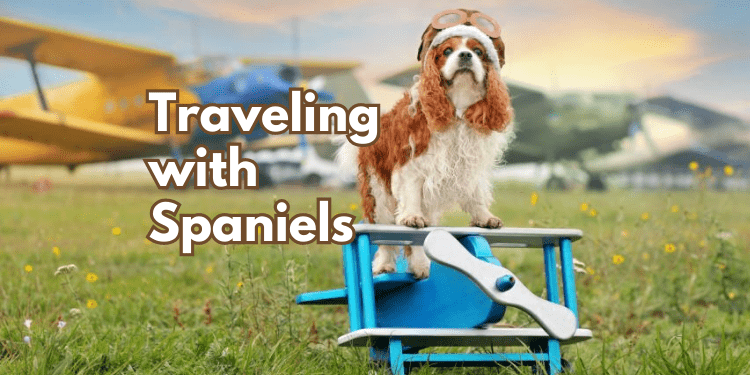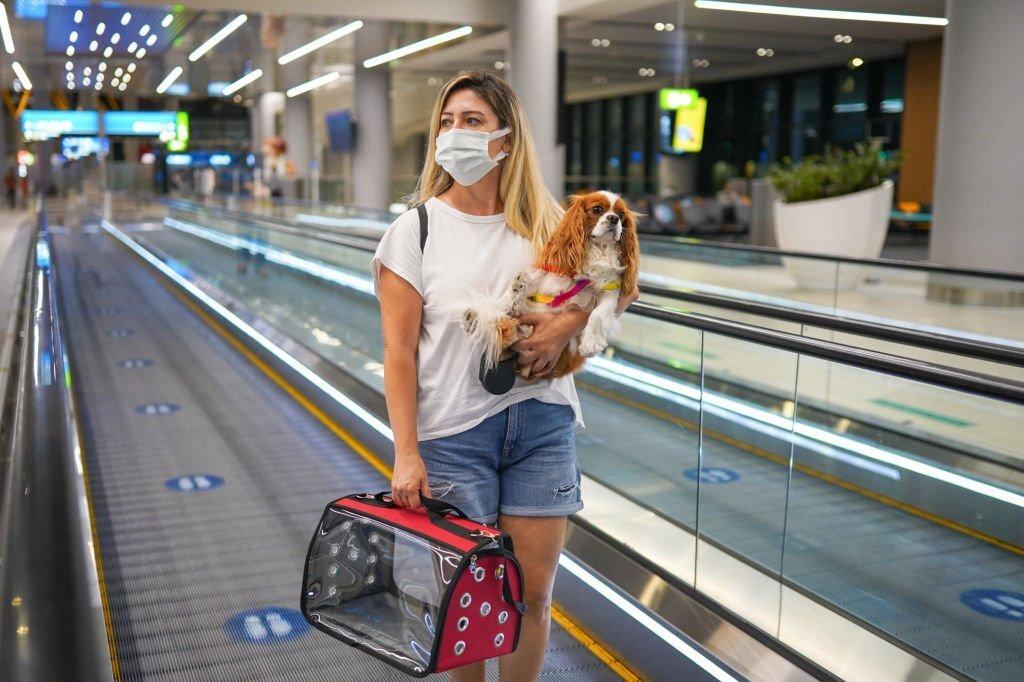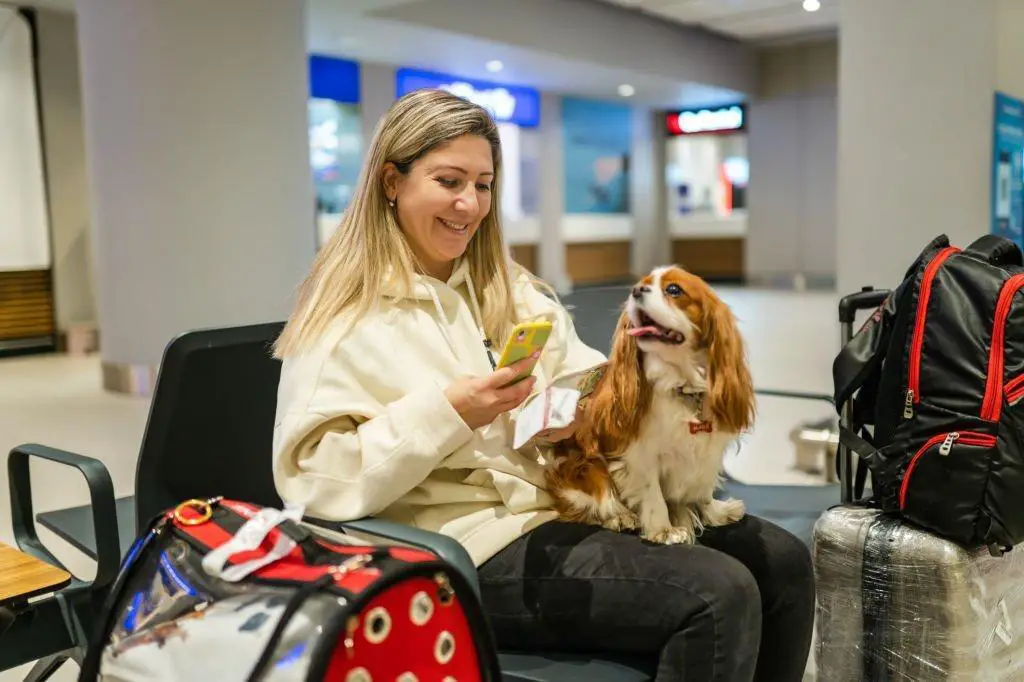When planning international travels with your Spaniel, it’s essential to understand the various rules and regulations governing pet travel. This article aims to help Spaniel owners easily make informed decisions regarding traveling with Spaniels.
Table of Contents
- 1 Regions with stringent Spaniel entry requirements
- 2 Countries that are Spaniel-friendly
- 3 Pre-Travel Vet Check-Ups: Ensuring Your Spaniels Health
- 4 Best airlines for Traveling with Spaniels
- 5 Pre-flight preparations and considerations
- 6 Safety Tips For Ensuring Your Spaniel’s Security
- 7 Conclusion
- 8 FAQs
Regions with stringent Spaniel entry requirements
Regions with Stringent Spaniel Entry Requirements
1. Japan
Rabies Status: Japan maintains its status as a rabies-free country, making it stringent about pet imports.
Vaccination Requirements: Before planning your trip, ensure that your Spaniel has received a minimum of two rabies vaccinations. There should be a waiting period of 180 days post the last vaccination before entering Japan.
Additional Information: Apart from vaccination, a blood test to prove the vaccination’s effectiveness and a thorough health examination are also often required. Always consult the Japanese embassy or consulate for the most up-to-date regulations.
2. Australia
Entry Classifications: Australia categorizes countries into three groups based on their rabies status and other factors. Entry for your Spaniel will be determined by which group your country of origin falls into: Group 1, Group 2, or Group 3.
Additional Information: Regardless of the group classification, a series of vaccinations, health checks, and possibly a quarantine period may be required. Always refer to the Australian Department of Agriculture for the latest guidelines.
3. Fiji
BAF’s Import Requirements: The Biosecurity Authority of Fiji (BAF) has strict requirements for pets entering the country. Meeting these guidelines is imperative.
Consequences: Not adhering to BAF’s import conditions can lead to dire consequences, including your Spaniel’s deportation or, in extreme cases, euthanization.
Recommendation: It’s vital to thoroughly research and understand BAF’s guidelines before planning a trip to Fiji with your Spaniel.
4. Iceland
Import Permit: If you wish to bring your Spaniel to Iceland, an import permit issued by the Icelandic Food and Veterinary Authority (MAST) is non-negotiable.
Additional Requirements: Iceland also has a strict quarantine process that typically lasts for four weeks. Before the trip, ensure you’re acquainted with all the necessary requirements.
5. India
DEFRA Export Certificate: This certificate is essential for Spaniels coming from the UK, ensuring they meet all health and vaccination requirements.
Additional Documentation: A health and vaccination certificate, stamped and approved by the flight commandant, is mandatory. It’s also recommended to check with the Indian Animal Quarantine and Certification Service for any updated regulations.
6. Bermuda
Import Permit: Before your Spaniel enters Bermuda, acquiring an import permit is compulsory.
Overseas Veterinary Health Document: This original document ensures your Spaniel meets Bermuda’s health and vaccination standards.
Recommendation: Check with the Bermuda Department of Environment and Natural Resources for specifics related to breeds, vaccination timelines, and other crucial information.
Countries that are Spaniel-friendly
United States
- General Entry: The U.S. is generally accommodating for Spaniels. The main requirement is proof of rabies vaccination, especially if your pet is over four months old.
- Specific Regions: Alaska, Hawaii, and Guam have more stringent rules due to their unique ecosystems and efforts to prevent rabies introduction. It’s essential to consult their specific regulations before traveling.
- High-risk Countries: If coming from a high-risk rabies country, additional precautions and waiting periods may be enforced.
Austria
- Multiple Spaniels: Austria allows travelers to bring in more than one Spaniel.
- Age and Breed Restrictions: Each Spaniel must be older than 12 weeks, already weaned, and not of a toy breed. This regulation ensures the wellbeing of younger dogs during the trip.
Italy
- Public Transport: Italy is accommodating when traveling with Spaniels on trains. They’re welcome in all train classes.
- Safety Requirements: To ensure the safety of other passengers and the dog itself, Spaniels must be kept on a leash and muzzled during the journey.
France
- Entry Regulations: For Spaniels to enter France, a 21-day waiting period after the rabies vaccination is mandatory.
- Identification and Documentation: Microchipping is a must for identification purposes. A valid European pet passport detailing all vaccinations and health checks is also required.
Hungary and Sweden
- Origin Requirements: Spaniels hailing from EU countries, rabies-controlled, or rabies-free nations are granted entry. This policy ensures that the risk of introducing rabies is minimized.
Switzerland
- Entry from the EU: For Spaniels arriving from an EU nation, Switzerland makes the process smooth by not requiring titer tests (blood tests to check immunity) or quarantine periods.
- Other Requirements: Standard requirements like proof of vaccination still apply. Always check for any additional or changing regulations before traveling.
Canada
- Identification: Unlike some countries, Canada does not mandate microchipping or tattooing for dogs imported as personal pets.
- Entry Documentation: A pet permit or a veterinary certificate attesting to the Spaniel’s health and vaccination status is adequate for entry.
Pre-Travel Vet Check-Ups: Ensuring Your Spaniels Health
Importance of a thorough medical examination:
- Ensure accurate microchipping details.
- Vaccinations ensure your Spaniel isn’t carrying or exposed to harmful diseases abroad.
- Blood tests determine travel eligibility.
- Check for potential internal or external parasite infestations.
Common vaccines and health certificates for Spaniels:
- Domestic Flights: Rabies, parvo, canine influenza.
- International Flights: Rabies, DHPP, Bordetella (kennel cough), Leptospirosis, Canine Influenza Virus.
- Health Certificates: These verify the health of your Spaniel and compliance with the destination country’s health standards. Requirements vary based on your destination and airline, with most nations needing a USDA-endorsed 7001 USDA-APHIS Form. For European destinations, an EU animal health certificate is mandatory.
Best airlines for Traveling with Spaniels
- American Airlines
- Swiss International Airlines
- Air France
- Air India
Here is the complete list of airline rankings.
Pre-flight preparations and considerations
Cargo Travel
Food/Water Intake:
- Regulate your Spaniel’s diet leading up to the flight. Avoid giving a full meal just before the journey to prevent stomach upset during the flight.
- Offer a moderate amount of water to ensure they stay hydrated but aren’t too full.
Relief:
- Ensure your Spaniel has had ample opportunity to relieve themselves before they’re placed in the cargo. This will make their journey more comfortable.
Crate Training:
- Start crate training your Spaniel well in advance of the travel date. This familiarizes them with the environment and reduces stress.
- The crate should be spacious enough for the Spaniel to stand, turn around, and lie down comfortably. It should also be well-ventilated and secure.
Consultation about Separation Anxiety:
- Some Spaniels may experience separation anxiety, especially when away from their owners for an extended period.
- It’s a good idea to consult with a veterinarian who might provide advice or recommendations to help reduce anxiety, such as pheromone sprays or anxiety-relief toys.
Noise Familiarization:
- Airports and planes can be noisy environments. If possible, expose your Spaniel to similar sounds in the weeks leading up to the trip. This can be done using recorded airport or plane noises, gradually increasing the volume to help acclimatize them.
In-cabin
Airline-Approved Carrier:
- If your Spaniel is traveling in the cabin, it’s crucial to use a carrier approved by the airline. This ensures it fits under the seat in front of you and meets the airline’s safety and size specifications.
- Ensure the carrier is comfortable for your Spaniel with soft padding and proper ventilation.
Feeding Precautions:
- As with cargo travel, avoid feeding your Spaniel on the day of the flight until you reach your destination. This minimizes the risk of stomach upset or the need to relieve themselves during the flight.
Relief:
- Before heading to the airport and again before boarding, give your Spaniel ample opportunity to relieve themselves. Depending on the flight duration, they might have to hold it in for several hours.
Safety Tips For Ensuring Your Spaniel’s Security
- Opt for direct flights whenever possible to reduce stress for your pet.
- Familiarize yourself with the airline’s pet travel policies. Some airlines have specific crate dimensions or other requirements.
- Always check the weather before flying. Extreme temperatures can be harmful to pets.
- A microchip is a small device implanted under your Spaniel’s skin. It stores a unique identification number. If your dog gets lost, vet clinics, shelters, and animal control can scan the chip to retrieve your contact information.
- An identification tag on your Spaniel’s collar should include your name, phone number, and address. If your pet gets separated from you, this tag will be the quickest way for someone to contact you.
- Always have your Spaniel on a leash in unfamiliar areas. This prevents them from running off and getting lost. A harness might be more secure than a collar for some dogs, as it reduces the risk of your Spaniel slipping out.
Conclusion
Traveling internationally with your Spaniel requires meticulous preparation. With diligent research, adherence to regulations, and prioritizing your pet’s well-being, you’ll ensure a smooth journey for both of you. Safe travels!
FAQs
Can a cocker spaniel travel on a plane?
Yes, cocker spaniels can travel on planes. Many airlines allow dogs, including cocker spaniels, to travel either in the cabin (if they meet size and weight requirements) or in the cargo hold in a secure and approved crate. It’s essential to check the specific airline’s pet travel policy and any related regulations or requirements of the destination country.
How much does it cost to fly a dog internationally?
The cost to fly a dog internationally varies widely based on the airline, the size and weight of the dog, the destination, and any additional requirements or services. On average, the price can range from $100 to over $1,000. Some countries may also have import fees or quarantine costs. It’s crucial to get a quote directly from the airline and research the destination country’s pet import regulations. You can also look for General research on airline fees and IATA pet travel guidelines.
Can I buy a plane ticket for my large dog?
Typically, you don’t buy a “ticket” for a dog as you would for a human passenger. Instead, you’ll pay a pet transportation fee. Large dogs usually have to travel in the cargo hold. Ensure the airline offers a pet cargo service, use an IATA-approved crate, and check the airline’s specific guidelines for crate dimensions, weight, and other requirements.
If you are a dog lover then, Subscribe to our weekly newsletters. No Spams!









